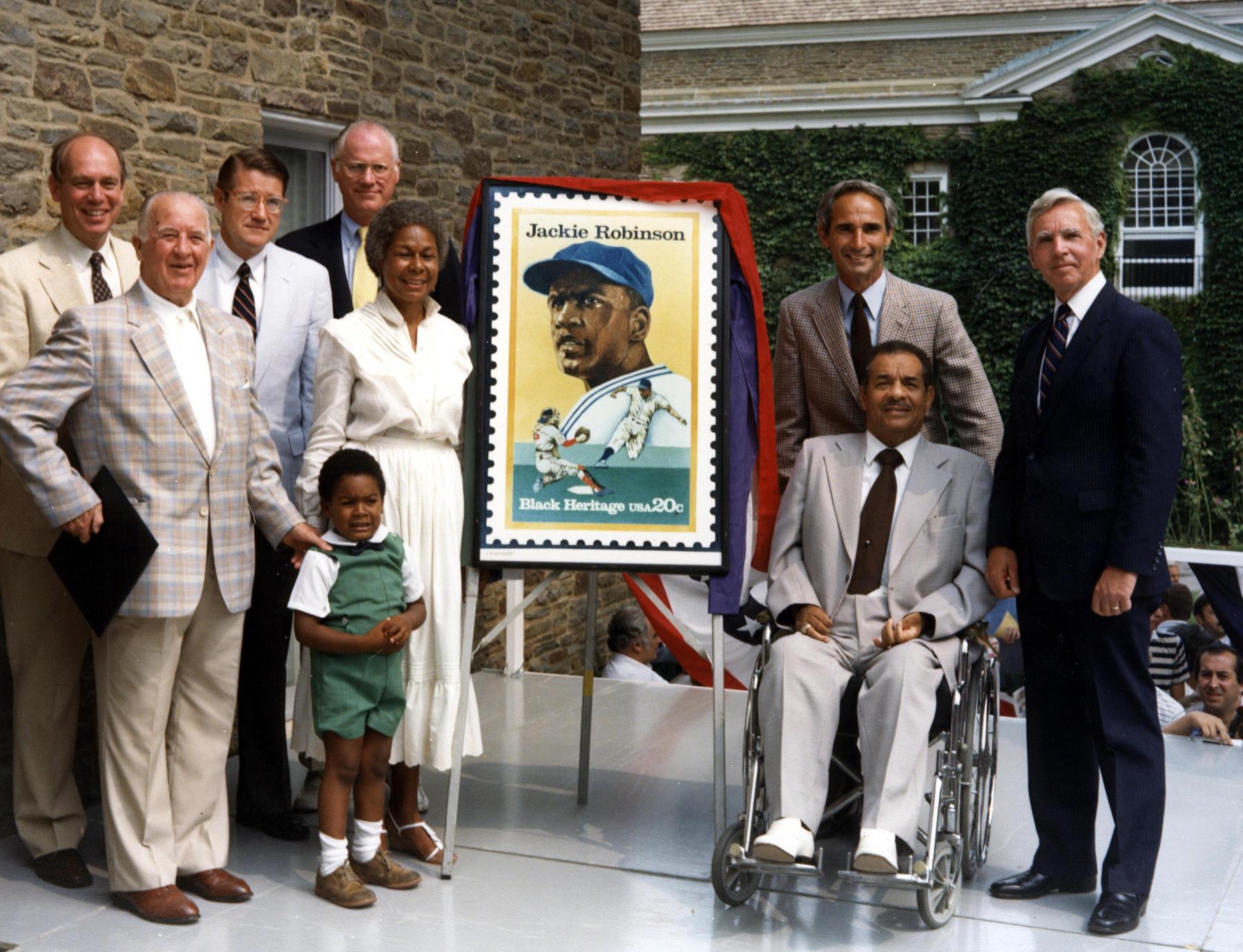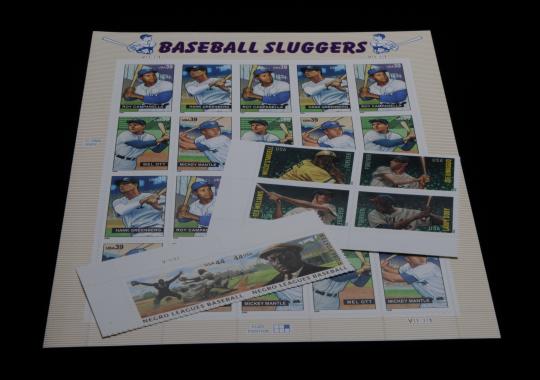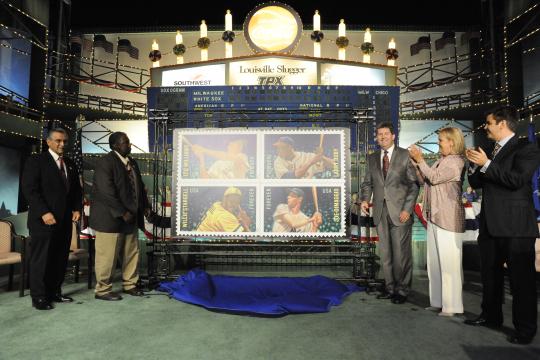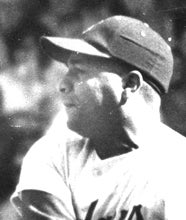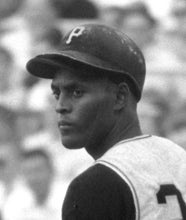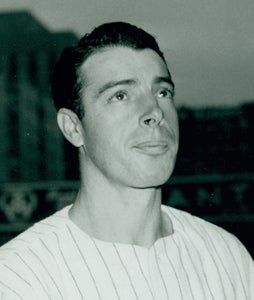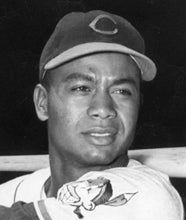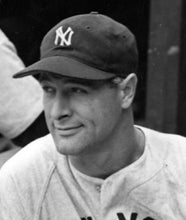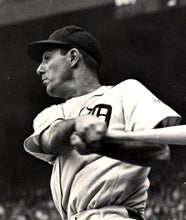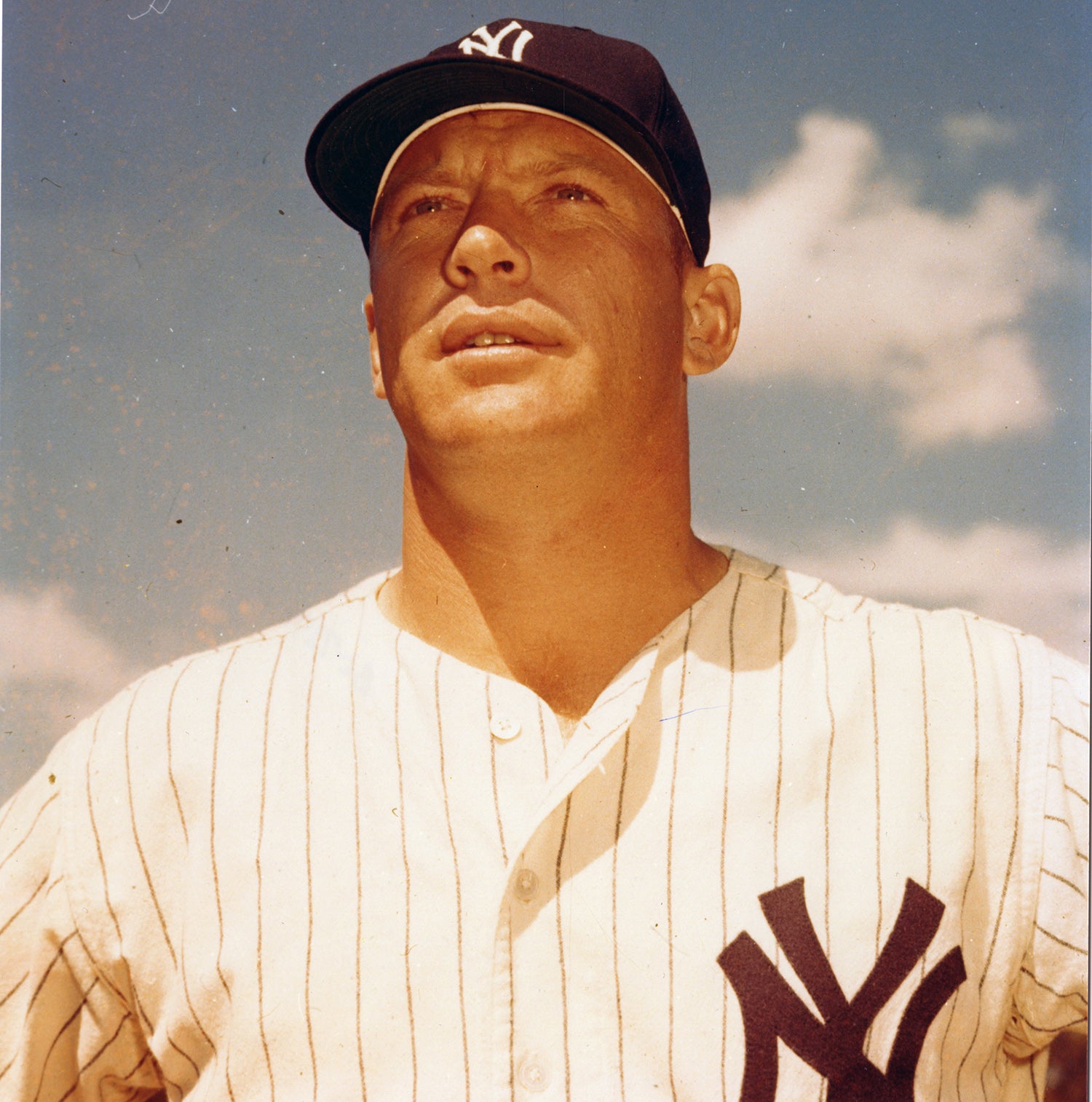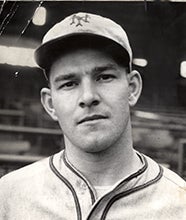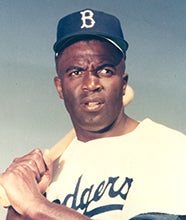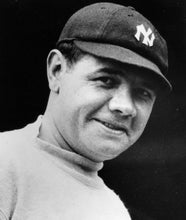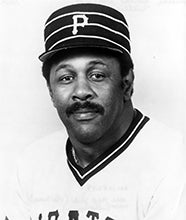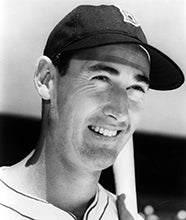“For his determination, his enthusiasm for life and his stature. I want them to know him as a thinker . . . fighting for his team as well as his people.”
- Home
- Our Stories
- Stamps of Approval
Stamps of Approval
On August 2, 1982 – more than a quarter of a century after his last game and 10 years after his death – Jackie Robinson blazed another trail.
That hot, summer’s day, in front of several hundred people at Cooperstown’s Cooper Park, the man who helped integrate baseball and lay the foundation for the American Civil Rights movement became the first member of the Baseball Hall of Fame to be honored with a stamp by the United States Postal Service.
The 20-cent stamp was designed by artist Jerry Pinkney to look like a vintage baseball card from the early 1950s. It featured a large head-and-shoulders shot of Robinson in his Brooklyn Dodgers cap with a smaller action shot of him sliding into home plate in the foreground. When Jackie’s widow, Rachel Robinson, and former Dodger teammate and friend, Roy Campanella, unveiled the artist’s rendering on an easel on the steps of the National Baseball Library, the crowd roared its approval. Cooper Park sounded like Ebbets Field during the late 1940s, early ‘50s. Jackie Robinson had captivated the fans again.
“He will always be remembered for the remarkable records he established in a Dodger uniform, and for his fierce competitiveness on the field of play,’’ Postmaster General William F. Bolger told the audience. “But he will also be remembered for his great patience and dignity while the most vicious slurs were being hurled against him – simply because of the color of his skin.”
After Bolger finished, Rachel Robinson stepped to the podium.
“I want people to remember him as he was in that picture,’’ she said pointing toward the easel. “For his determination, his enthusiasm for life and his stature. I want them to know him as a thinker . . . fighting for his team as well as his people.”
The stamp was the fifth issued in the Postal Service’s Black Heritage series. (Previous honorees included Martin Luther King and Harriet Tubman.) And it wound up being a huge hit with both baseball fans and stamp collectors, as the Postal Service printed more than 164 million copies.
Fittingly, the Robinson stamp opened the door for other Baseball Hall of Famers to be commemorated with stamps. In 1983, a Babe Ruth stamp was unveiled to commemorate the Sultan of Swat’s game-winning home run in the first All-Star Game 50 years earlier, and in 1984, late Pittsburgh Pirates great Roberto Clemente was similarly honored by the Postal Service. Five years later, Lou Gehrig received his stamp of approval on the 50th anniversary of the Iron Horse’s famous “Luckiest man on the face of the earth” speech. Although Ruth overshadowed Gehrig during their playing days, the slugging first baseman wound up surpassing the Babe’s print-run record, 262 million to 184 million, according to figures published in the 2013 edition of Scott Specialized Catalogue of United States Stamps and Covers. Gehrig’s mark still stands 24 years later.
“Clearly, the success of the Robinson stamp prompted them to take a look at other deserving Hall of Famers,’’ says Ken Martin, the executive director of the American Philatelic Society. “And they soon discovered how popular these stamps were among not only stamp collectors, but baseball fans. But it also made sense to commemorate these players and others who followed because they were people who had historical and cultural impacts on our society.”
Though Robinson was the first Hall of Famer to be depicted on a postage stamp in the United States, he wasn’t the first baseball-related stamp. On June 12, 1939, a three-cent stamp was issued to celebrate baseball’s centennial and the opening of the Hall of Fame in Cooperstown. It featured a group of boys playing a sandlot game, with a barn, a school and a church steeple in the background.
It would be 30 years before another baseball stamp was issued. In 1969, to commemorate the 100th anniversary of the Cincinnati Redstockings’ fielding of the first all-professional team, the Postal Service issued a six-cent stamp showing a silhouette of a batter preparing to swing at a ball. Although the stamp advisory board had received numerous requests to honor the milestone with Ruth and other popular players, the committee opted for a generic player instead.
Interestingly, both Robinson and Ruth would wind up being depicted on three different stamps through the years. Jackie and the Babe were included in a 1999 set celebrating each decade of the 20th century and a 2000 set honoring 20 baseball legends. Clemente and Gehrig also were commemorated in that 2000 set.
After Gehrig had been memorialized with his first stamp, there was a 10-year stretch before another Hall of Famer was honored. That drought ended with the Robinson and Ruth stamps in 1999. A year later, other Cooperstown immortals, including Josh Gibson, Walter Johnson, Satchel Paige and Ty Cobb were featured in that legends set.
In 2006, Mickey Mantle, Hank Greenberg, Roy Campanella and Mel Ott stepped to the plate in a highly popular Baseball Sluggers four-stamp set, which boasted the second largest baseball-related print run of all-time – 200 million. Four years later, the Negro Leagues were commemorated in a three-stamp set that featured Hall of Famer Rube Foster, who is considered the Father of Black Baseball.
Baseball stamps featuring Hall of Famers have become some of the Post Office’s most successful issues since Jackie Robinson debuted on a stamp in 1982. The Baseball Sluggers series in 2006 featured Roy Campanella, Hank Greenberg, Mickey Mantle and Mel Ott, while another series in 2012 featured Joe DiMaggio, Larry Doby, Willie Stargell and Ted Williams. Negro Leaguers were featured on stamps in 2010, including Hall of Famer Rube Foster. (Milo Stewart, Jr. / National Baseball Hall of Fame)
In 2012, Ted Williams, Joe DiMaggio, Larry Doby and Willie Stargell got their turn at bat in a set that was released with the four sluggers together and individually in the respective cities in which they spent their careers – Boston, New York, Cleveland and Pittsburgh.
In all, there have been 29 members of the Baseball Hall of Fame featured on a total of 36 stamps.
And given the popularity of baseball stamps, that number is expected to increase. Until recently, the Postal Service had a rule that a person couldn’t be considered for a stamp until he or she was deceased for 10 years. But that requirement has been removed, so we may see cases where the living or recently deceased will be honored. That’s great news for fans of legends such as Willie Mays, Hank Aaron, Cal Ripken Jr. and Stan Musial, each of whom is expected to receive serious consideration by the advisory board, which reviews several thousand suggestions each year.
“Baseball has dwarfed all other sports combined,” Martin said. “And I think that trend will continue because the sport has been ingrained in our history and our society for much longer than other sports, and it seems to spawn more collectors than other sports.”
Scott Pitoniak is a freelance writer from Rochester, N.Y.

